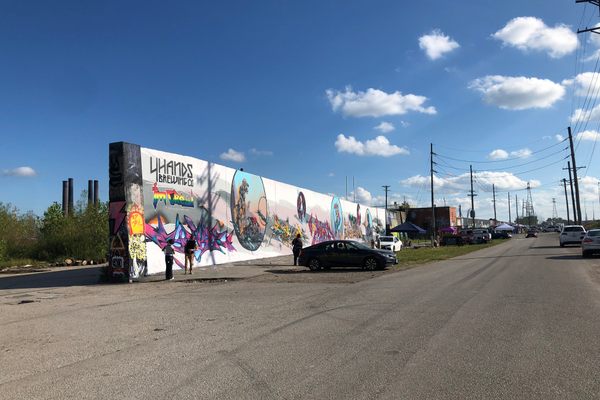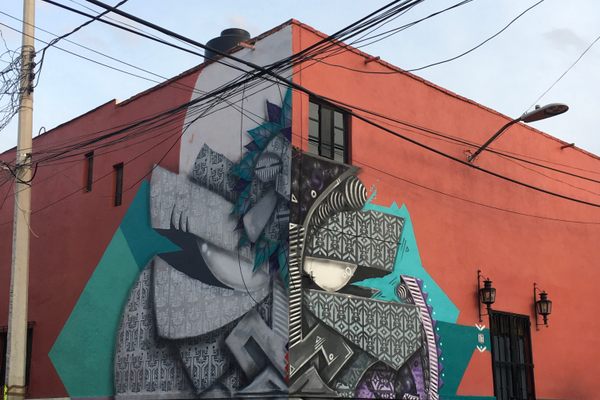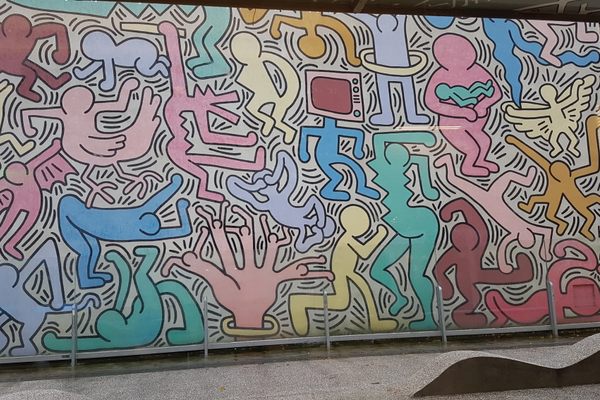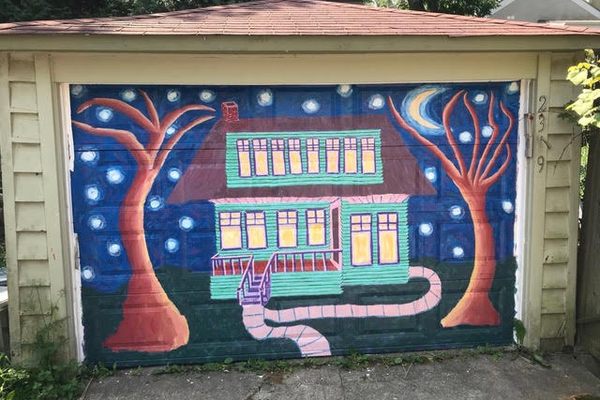About
This eye-catching mural depicts the tragic explosion of an atomic bomb. In the center, a skeleton erupts into flames, trailed by a train of ghosts and others humans running from the fire, a Guernica for the atomic age and to remember the victims of Hiroshima and Nagasaki. The artwork’s history is just as captivating as the images it portrays.
Japanese artist Tarō Okamoto started this work in 1967, when he was asked to paint a mural for a new hotel in Mexico City. He completed the giant mural in September 1969, but the finished work was never on display—his client had gone bankrupt before the hotel’s completion. The mural then went missing for decades.
Tarō's secretary and life partner, Toshiko Okamoto, kept looking for the masterpiece even after the artist’s death. She finally discovered it in 2003 in a Mexican suburb. Due to decades of negligent storage, the work was heavily damaged. Toshiko and her supporters decided to transport the artwork back to Japan and restore it there.
The restoration was a huge project that cost hundreds of millions of dollars. The mural was separated into several parts then shipped to Japan in a container in 2005. Sadly, Toshiko died just before its arrival. The mural was restored by Emile Yoshimura, who worked with other pieces made by Tarō.
After a few temporary exhibitions, those in charge of the painting started looking for a place to permanently display the work. Several cities participated in the bid, and it was decided it would be put in a passageway in Tokyo's Shibuya Station so the maximum number of people can see the mural as a public art. It has been on display since November 2008. Since then, billions of people have passed by this giant masterpiece, many completely unaware of its history.
Related Tags
Know Before You Go
The mural is on the second floor of Shibuya Station in an enclosed elevated walkway passing over Jingu-dori Street just south of Shibuya Scramble Crossing and the statue of Hachiko and just north of the Moyai Statue. The walkway connects the JR train platforms on the east side of the station with the Keio train platforms and Mark City (a shopping complex) on the west side of the station. Unfortunately, the station contains no signs indicating the location of the mural, although the mural is marked on Google Maps. As an additional note, not only is the elevated walkway visible directly south form Shibuya Scramble Crossing, it is also possible to see the mural through the windows of the walkway from the crossing.
The walkway may be very crowded, so try to stand out of the way of other people. The best place to view the mural is from the windows at the opposite side of the walkway. This area is outside the gated areas that lead to the train platforms, so it can be accessed without paying any fares.
Also note that the windows on the side of the walkway opposite of the mural provide an excellent view of Shibuya Scramble Crossing.
Hidden Japan: Sado Island, Nara & Kyoto
Explore a different side of Japan.
Book NowCommunity Contributors
Added By
Published
March 9, 2018


































